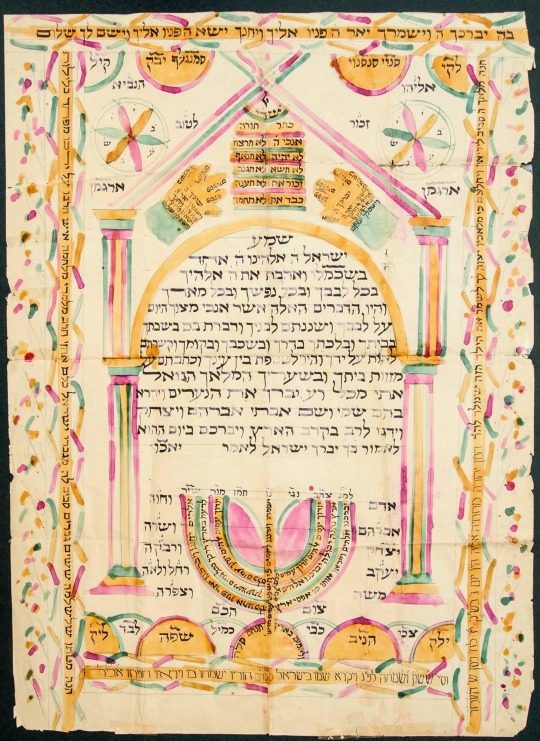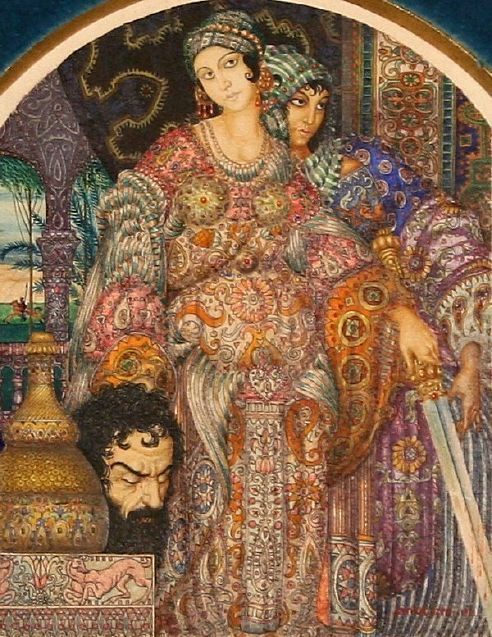Photo

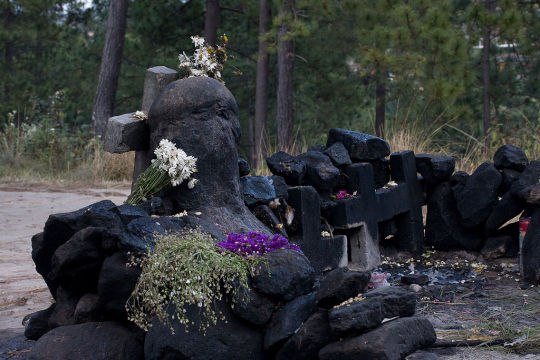
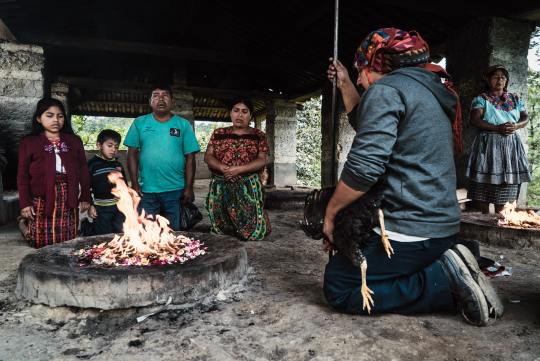
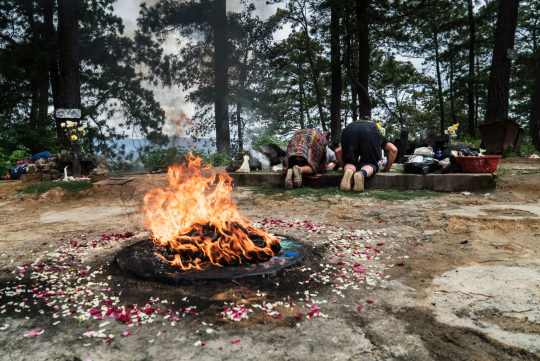

Maya religiosity still survives Christianity, in photos offerings and rituals to a pre-Columbian deity, Pascual Abaj, by the Mayans of Chichicastenango in Guatemala, photos by Kamran Ali
349 notes
·
View notes
Photo

St. Katherine Greek Orthodox Church in Falls Church, Virginia
325 notes
·
View notes
Note
Would you consider Perun to be a god of war? I know he is associated with justice, but was just wondering if war would also be an accurate association
Oh I’d even venture to say that as far as his popular image goes he is associated with war and combat much more commonly than with justice.
His name means ”The One Who Strikes” and reflects his role as the punisher of evil. In Polish a related word „prać” exists, denoting hitting or beating (as well as doing laundry, which is it’s main meaning in modern Polish, originating from the times when laundry involved beating the fabric with a wooden bat). Perun is a protector of the people but he fulfils this role through actively and mercilessly seeking out, pursuing and attacking what he considers unclean forces (click, click). People used to believe fulgurites and belemnites are Perun’s scattered arrows, that he uses to shoot evil spirits; his attributes are also axes and hammers.
„Thus the Emperors Leo and Alexander made peace with Oleg, and after agreeing upon the tribute and mutually binding themselves by oath, they kissed the cross, and invited Oleg and his men to swear an oath likewise. According to the religion of the Russes, the latter swore by their weapons and by their god Perun, as well as by Volos, the god of cattle, and thus confirmed the treaty.”
„The unbaptized Russes shall lay down their shields, their naked swords, their armlets, and their other weapons, and shall swear to all that is inscribed upon this parchment, to be faithfully observed forever by Igor', all his boyars, and all the people from the land of Rus'. If any of the princes or any Russian subject, whether Christian or non-Christian, violates the terms of this instrument, he shall merit death by his own weapons, and be accursed of God and of Perun because he violated his oath. So be it good that the Great Prince Igor' shall rightly maintain these friendly relations that they may never be interrupted, as long as the sun shines and the world endures henceforth and forevermore.”
„But if we fail in the observance of any of the aforesaid stipulations, either I or my companions, or my subjects, may we be accursed of the god in whom we believe, namely, of Perun and Volos, the god of flocks, and we become yellow as gold, and be slain with our own weapons.”
- Russian Primary Chronicle, Laurentian Text
Those quotes are very significant because they reveal to us a lot about both gods’ spheres of activity - the punishments for breaking the oath reflect the gods’ patronage. Russes swear by their weapons and Perun - the punishment for breaking their word is being slain by their own weapons. They swear by Veles, the chthonic god of cattle - the punishment is becoming golden, most likely an euphemism for contracting a specific type of disease (for example scrofula was known as ”zołotucha”, ”the golden illness”).
Many scholars (Uspensky and Szyjewski to name some) view Perun as patron of the prince and his warriors (druzhina). It’s even speculated that he may have been the patron of the Rurikid dynasty as a whole, with Veles in opposition to him as patron of common people, peasants. In this context it has to be mentioned that at the time it was also the prince who served as the lawmaker and one of the main administrators of justice.
Two commonly mentioned Saints he is believed to have been amalgamated with are Prophet Elijah (Ilya) and Saint George (Yuriy). The former a stern and punitive man travelling across the sky in a burning chariot, armed in lightning, wheels rattling thunderously. The latter a roman soldier, a military Saint, in Russia favored by the upper classes (Ivanits); usually depicted on a horse, spear in hand, in the act of defeating a dragon. Some scholars also believe him to be related to Ilya Muromets, a popular hero from the bylinas of Kyivan Rus.
A story about Prophet Elijah and Saint Nicholas.
In Russian folklore Prophet Elijah is seen as strict and formal, quick to punish evil as well as inappropriate behaviors. With the power over storms of wind and hail as well as fires started by the strike of lightning he was a terrifying force, one that could ruin your fields or your house in just few minutes, sentencing you to poverty and starvation. On the other hand, the rain arriving with storm season was absolutely necessary to nourish the fields. It should come as no surprise that common folk had a lot of superstitions centered around him and were careful to treat him with respect. In the folk tale linked above we can see him taking deep offence at lack of respect shown to him and punishing it harshly, but also doing his best to ensure those who honor him faithfully never suffer by his hand and are blessed.
Both his anger and joy can be fearsome. A friend of mine once told me a Serbian legend about Prophet Elijah: that he loves celebrating his birthday (20th of July/ 2nd of August) so much he throws huge parties and cheerfully tries to impress the guests by striking things with lightning and causing great thundering in the sky. Unfortunately the show is rather scary for regular mortals and can cause significant damage, so Elijah’s siblings frequently try to make him forget about his birthday and stop the party from happening. Upon discovering their plots he becomes sad and mad and may throw around some more lightning - this is why either way you’ll have plenty of storms in July/August.
The image of Perun we can reconstruct from those stories is that of an aggressive and punitive warlike figure. Still, it can be seen clearly how that ties in with his role as upholder of order: lawmaker and law enforcer. A perfect guarantor for your oaths if you intend to uphold them.
My interpretations: For the reasons presented above I personally tend to associate Perun with disciplined army and strategic, organized warfare rather than merely the bloodshed of battle or unbridled rage of a berserker. As the patron of warriors/soldiers he can be merciless and harsh but also protective and courageous. As the god historically associated with nobility he pays attention to whether people approach him with respect and honor him respectfully, holds the authority over law and order, as well as to some degree embodies the ideals of honor and honesty. Tldr: you couldn’t find a better person to have in your corner if you’ve gotten yourself in trouble with any belligerent spirits or could use some structure and discipline in your life.
Sources (in random order cause tired): Russian Primary Chronicle, Laurentian Text, Mitologia Słowian by Aleksander Gieysztor, Religia Słowian by Andrzej Szyjewski, Kult Św. Mikołaja na Rusi by Boris Uspensky (pl. trans. Janus, Mayenowa, Kozłowska), Religia Pogańskich Słowian by Stanisław Urbańczyk, Russian Folk Belief by Linda Ivanits
67 notes
·
View notes
Photo



Xochipilli, the Aztec Prince of Flowers
In the mid-19th century, a 16th-century the Aztec statue of Xochipilli was unearthed on the side of the volcano Popocatépetl near Tlalmanalco. The statue is of a single figure seated upon a temple-like base. Both the statue and the base upon which it sits are covered in carvings of sacred and psychoactive organisms including mushrooms (Psilocybe aztecorum), tobacco (Nicotiana tabacum), Ololiúqui (Turbina corymbosa), sinicuichi (Heimia salicifolia), possibly cacahuaxochitl (Quararibea funebris), and one unidentified flower.
135 notes
·
View notes
Photo

“Codice Baranda” replica print, Maxine Albro, 1930
Original codice dates to 1521.
To help support the preservation of our collection click here.
11 notes
·
View notes
Photo


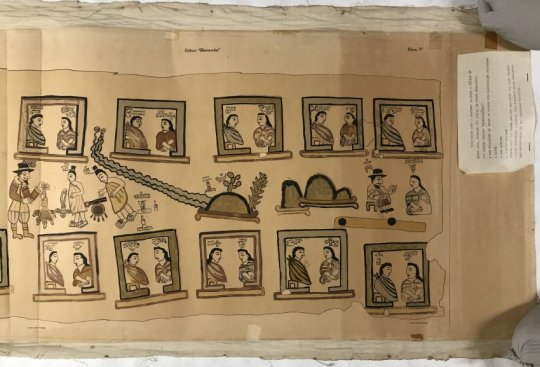
Codex Baranda, replica print by Maxine Albro, circa 1930 (original 1521)
Ink and variety of pigments on parchment
To help support the preservation of our collection click here.
18 notes
·
View notes
Photo

Canopic Jar for the Royal Scribe Khera, Egyptian, 664–332 BC, Saint Louis Art Museum: Ancient Art
https://www.slam.org/collection/objects/31994/
35 notes
·
View notes
Photo
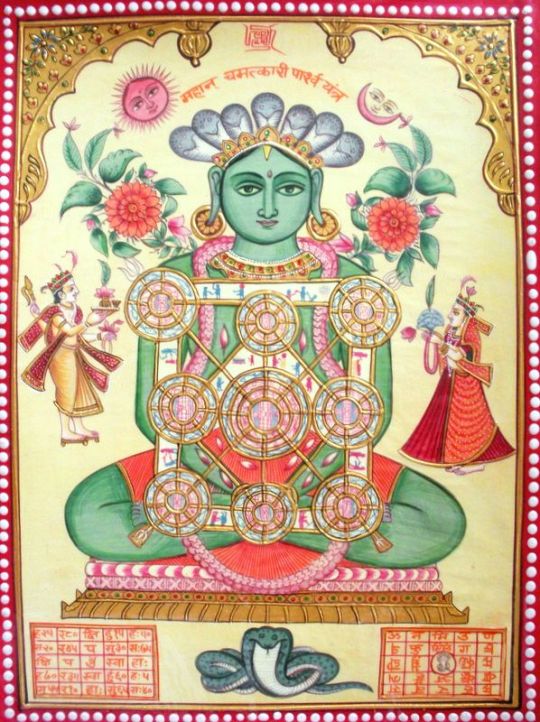
Parshwanathji with Yantra (via Jain University)
115 notes
·
View notes
Photo
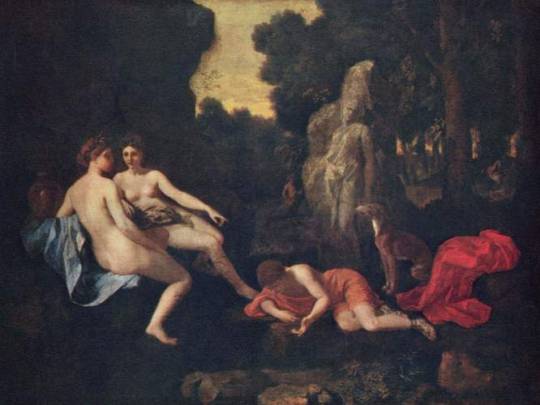
Narcissus and Echo, 1650, Nicolas Poussin
Medium: oil,canvas
30 notes
·
View notes
Text
Festivals we know (almost) nothing about
- Part 1
Once in a while, it's good to remember that none of our calendars are complete. This is much more obvious with non-Attic/Athenian calendars, and anyone who decides to jump into attempting to reconstruct the cultic calendar of Delphi, Delos, Sparta, Argos etc. will know exactly what I mean, as they are painfully fragmentary (not to mention the ones that are completely lost).
Because of the contrast between the fairly well-preserved Athenian calendar and the others, we often forget that Athenian calendar we know about is only "well-preserved" but by no means complete.
Back in January, I decided to make an user-friendly calendar and I had to make several choices about how to keep it simple. One of those choices was to get rid of obscure festivals, especially when their date or content is unknown or highly speculative.
The downside of my project is that it further solidifies this illusion of completeness. This is why I'm making this post: here's the list of Athenian festivals we know by name that haven't made it into my calendar for the reasons mentioned above. Emphasis on "know by name", because there's probably a few we completely lost as well. This list likely isn't going to be exhaustive either (took out deme-specific festivals, hero worship, battle commemoration festivals etc. + I probably forgot stuff).
Note 1: This will be cut in parts of 10 festivals because there's really a lot.
Note 2: The aim isn't to tell people to add all of those holy days and festivals to their calendar, that would be way too much for a single person. Rather, this list is meant as inspiration for worshippers, especially those who have relationships with less widely worshipped deities.
The Adonia
Date unknown but probably happened in the summer. We actually have decent information on this one, aside from the date issue. It was primarily a festival for women. A few days before the festival, they would go plant young sprouts of lettuce and other garden plants and cereals on the rooftops. The sprouts, being left out in the sun, would quickly die, which was meant to represent the tragic short-life of Adonis. On the day of the festival, the women would come back on the roof to cry and mourn the death of Adonis.
For a complete study and contextualization of this festival, see "The Athenian Adonia in Context: The Adonis Festival as Cultural Practice" by Laurialan Reitzammer.
The Aiora
A swinging festival of unknown date, though there is debate about it being part of the Anthesteria. The Aiora was probably connected to the death of Erigone.
The Amarysia
Pausanias is our only source of a cult to Artemis Amarysia in Athens (Description of Greece 1. 31. 5):
"Amarynthus is a town in Euboea, the inhabitants of which worship Amarysia, while the festival of Amarysia which the Athenians celebrate is no less splendid than the Euboean. The name of the goddess, I think, came to Athmonia in this fashion and the Colaenis in Myrrhinus is called after Colaenus."
We have no further information for this cult in Athens specifically.
The Anthesphoria
This one is tricky to fit in the list, because we have very little proof this was ever celebrated in Athens, and most of our sources on the festival trace back to Sicily, even though there are indications it was held in other parts of the Greek world. It was a festival of the flowers focusing around Persephone and Demeter. It was probably held in early spring, if we take into consideration the common stem between Anthesphoria and Anthesterion (anthes = flower), the Attic month of February-March, which alludes to the abundance of flowers during this time of the year.
For a more complete post on this festival, see @verdantlyviolet's breakdown. For a study, see "Hera’s Lettuce Women and the Peculiar Uses of Flowers, Fruit and Vegetables in Ancient Greek Festivals for Women" by Lucinda Guzman (Master's thesis)
The Arrhephoria
Festival held in honour of Athena and Pandrosus, date unknown but it seems to have been linked to the Acropolis.
The Asklepieia
Probably a set of two festivals to Asklepios, one occuring in winter (between the Lenaia and the City Dionysia, so roughly between January and March/April) and another roughly six months later, between the Eleusinia and the Thesea. At this point, it is believed that the latter actually is known under the name of Epidauria, which was celebrated on Boedromion 17 or 18 (around September). Whereas the first festival would fit with an observance to Asklepios known to happen on Elaphebolion 8. It was probably at those two festivals that doctors would make their sacrifices to the god.
The Diisoteria
Two dates are known for this festival to Zeus Soter and Athena Soteria, as there are indications this festival has been changed over the centuries. The original date was Skirophorion 30, the last day of this month (somewhere between June and July, most likely - which also happens to be New Year's eve for the Attic calendar). According to R. Parker, the date was moved in the 4th century BC to be earlier in the month, before Skirophorion 11. A decree from the 2nd century BC indicates Asclepius and Hygieia were also added to the list of recipients.
The Elaphebolia
Festival to Artemis, probably in the month of the same name (Elaphebolion - March/April). We can assume it was held on the 6th day, but we have no certainty. The preparation of ‘deer’ cakes (probably in private houses?) attested by Athenaeus is all that we can be sure of.
The Galaxia
Festival in honor of Cybele, the Mother of the Gods. No date known. For the occasion was offered a golden bowl with ‘galaxias’, a mixture of barley flour and milk.
The Genesia
Festival celebrating the dead, most likely dead parents. It was held on Boedromion 5 (late August - early September). Details are blurry, it's possible this was mostly a private, familial celebration. If there was a public rite distinct from private commemorations, we do not know where it was held.
_______________________
Unless stated otherwise, most of the information is taken from Parker R., Polytheism and Society at Athens, 2005
313 notes
·
View notes
Text
IMAM GHAZZALI’S IHYA ULUMIDDIN, VOLUME.I, CHAPTER IV
EXCELLENCE OF MOSQUE AND PRAYING PLACE
God says: Those who have got faith in God and the next world inhabit God’s mosques.
The Prophet said : If a man constructs a mosque for God, He constructs for him a place in Paradise.
The Prophet said : If a man loves mosque, God loves him. He said: When one of you enters a mosque, let him pray two rak'ats before he sits. He said : There is no prayer for mosque except in mosque. He said : Angels like one of you until he keeps seated in his praying place. They say : God, send blessings on him. God, have mercy on him, forgive him till he keeps his ablution or gets out of mosque.
The Prophet said : There will be some people among my followers who will come to mosque and sit in groups. They will like to talk of this world and its matters. Don’t sit with them. God has got no necessity of them. He said God said in some of His books : Mosques are my houses in the world and My neighbors are those people in them who are habituated to go there. Good news is for one who keeps his house pure and then meets Me in My house. He said : When you find a man visiting mosque always, bear witness that he has got faith. He said : Random talks in mosque consumes virtues as animals eat grass. Hazrat Anas said : If a man gives a light in a mosque, angels and the bearers of the Thone seek forgiveness for him till the light exists in the mosque. Hazrat Ali said : When a man dies, praying cloth in the world and his good deeds raised high in the sky weep for him. Then he said : The heaven and earth did not weep for them and wait for them. Hazrat Ibn Abbas said : The word weeps for him for forty days.
8 notes
·
View notes
Photo
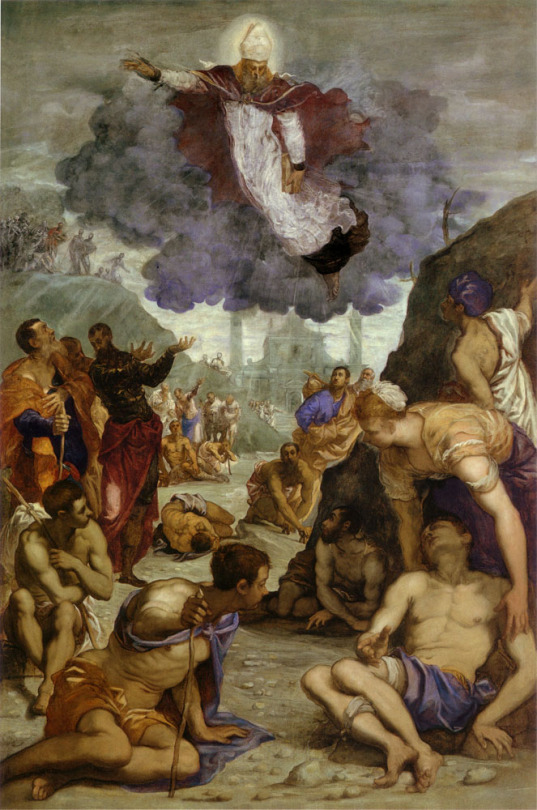
The Miracle of St Augustine, 1550, Tintoretto
Medium: oil,canvas
61 notes
·
View notes
Photo

Baptism of Christ, 1568, El Greco
Medium: oil,canvas
97 notes
·
View notes


